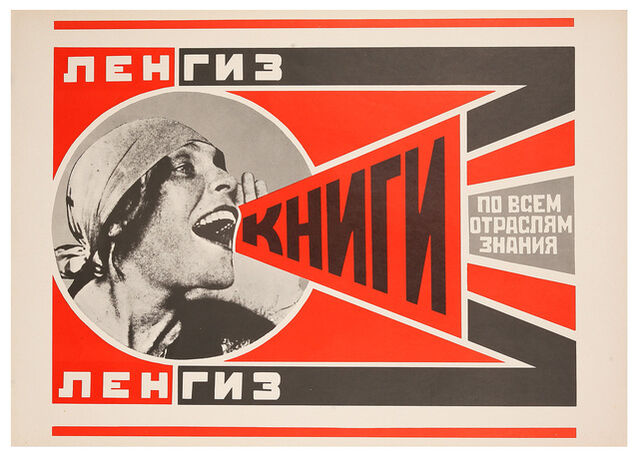Questions / Prompts
- What common views do these artists/designers share and where might they disagree?
- Which elements of these texts remain relevant for the present, and which elements are problematic?
- Using visual examples from the Futurists and Constructivists, present the ways that political and economic power can be expressed through visual design.
- How has the communication process changed since the early 20th Century, specifically with regard to “feedback” and “noise”?
Reading Response 3
The common view shared among these designers and artists is the need to be agents of social change through their work. They all may share the same view but each of them differs in their approach. Such as Marinetti in his designs breaking away from the standard symmetrical typography in favor of more noisy and aggressive typography that “embraces the future.” Contrasted with Rodchenko’s designs which made heavy use of diagonals and geometric forms following a more uniform design than that of Marinetti’s free form type.
A constant element from these texts that remains relevant today is that when technology changes so to do design. One of the most impactful technologies that changed design was Gutenberg’s letterpress which changed how books were created. Instead of having a handful of scribes handwrite each book individually, the letterpress mass-produced books on a scale that was unheard of at the time. With more books being produced, they were now more accessible to the common people. Despite this, there are some elements from the texts that could be seen as problematic, such as the celebration of violence in the Manifesto of Futurism. Some might view this as going too far and a bit extreme just for the sake of progress.
Both Futurists and Constructivists used visual design to express political and economic power, and an example would be one of Rodchenko’s posters called “Books (Please)! In All Branches of Knowledge.” This poster was used to communicate Rodchenko’s message to the general masses.
Nowadays communicating messages to the masses has become much easier since the early 20th Century. Through social media and the internet, it connects us on a scale that reaches the entire globe in mere moments. With this giving and receiving feedback from others has become so much easier, but sometimes the “noise” of sending this feedback online can lose its intended meaning. Leading to different misinterpretations of what was originally supposed to be conveyed.
Hypothesis Annotations
- Idea: We intend to sing the love of danger, the habit of energy, and fearlessness.
- Idea: The Private Property aspect of creativity must be destroyed. All are creators and there is no reason of any sort for this division into artist and nonartist.
- Idea: Work for life and not for palaces, temples, cemeteries, and museums. work in the midst of everyone, for everyone, and with everyone.





Recent Comments